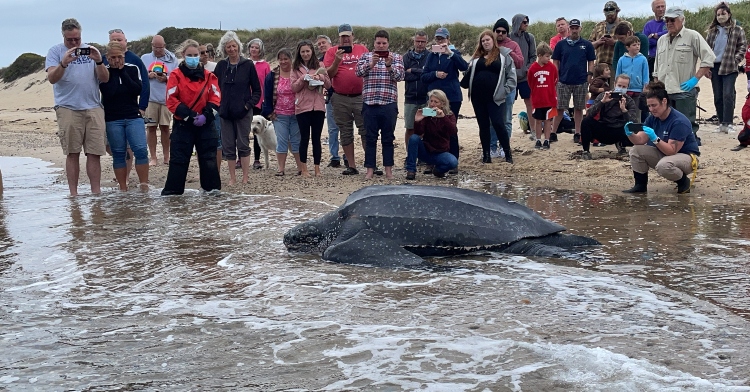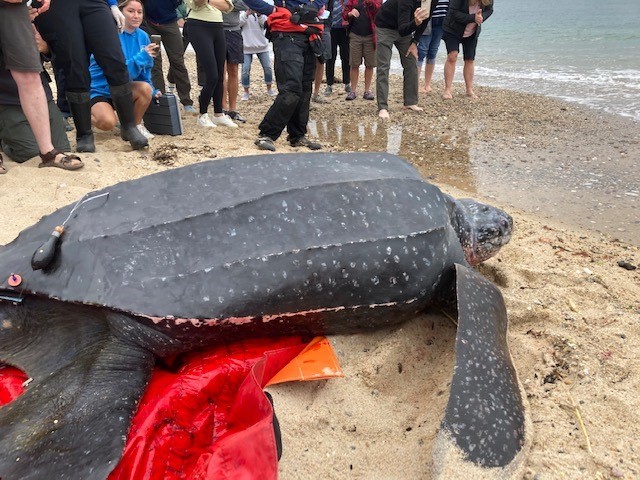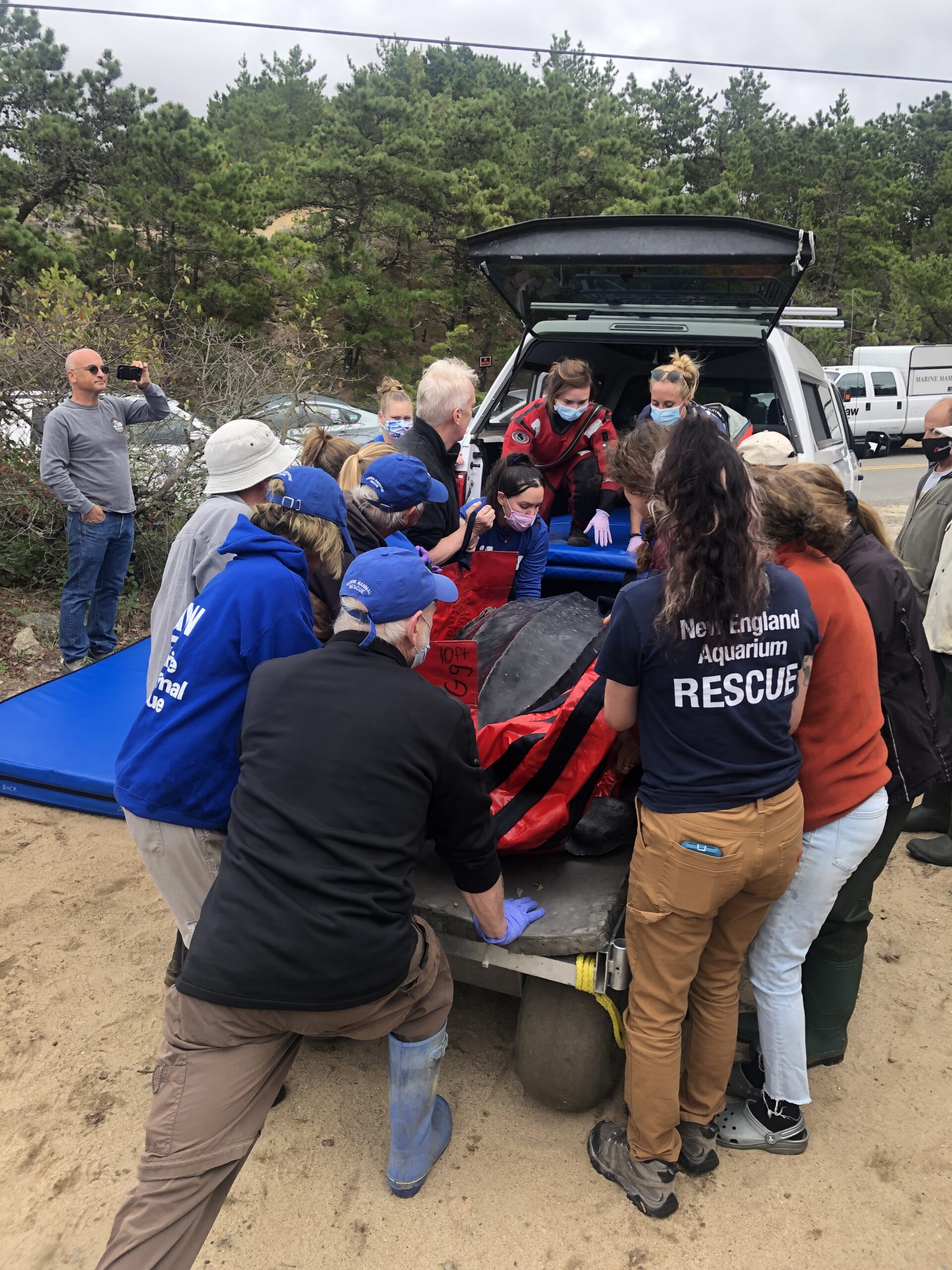Every year, massive leatherback turtles cross both the Pacific and Atlantic Oceans to nest and feed, averaging about 10,000 miles.
Named for their leather-like shells, the massive sea turtles are some of the most migratory animals in the world. Coastal residents in Massachusetts expect to see these creatures in their waters in October, but when an adult male leatherback wound up stranded on a mudflat along the Herring River on Cape Cod, locals knew something was wrong.
Concerned citizens reported the turtle to Mass Audubon Wellfleet Bay Wildlife Sanctuary, which dispatched a team of volunteers to keep the animal from moving farther inland with the tide.
“We wanted to keep it off the oysters and keep it from stranding somewhere we couldn’t rescue it,” Director Emeritus Bob Prescott said. “If it got away, there was no telling where it would strand next.”
Moving a turtle of this size is no easy feat. The turtle weighed an estimated 600 pounds and was about 5 feet long! They called in more animal rescuers from International Fund for Animal Welfare, asking them to bring special heavy-duty transport carts, mats, and stretchers (which are typically used to move beached dolphins and small whales). Together, they relocated the animal to Herring Cove in Provincetown.
Once he was safely in the cove, staff from New England Aquarium’s Rescue and Animal Health met with the groups to give the turtle a health checkup.
“Our initial evaluation indicated that the turtle was very strong and in good body condition, and this helped us to decide that it was a good candidate for release,” said Dr. Charles Innis, director of animal health at the New England Aquarium.
Before getting the turtle back to his ocean home, Charles gave him some vitamin and mild pain reliever injections and attached small ID tags and a microchip so they can track him using satellites. The aquarium plans to track the turtle to make sure he survives for the next 30 days; then they will monitor his migration patterns for the next five to 10 years.
When it was finally time to say goodbye, a large crowd gathered and cheered as he gently slipped back into the ocean’s waves.
Experts believe this turtle got lost and disoriented in the tidal flats, but he was so strong and healthy that he made it through his adventure on dry land. Thank goodness these hardworking volunteers and marine experts were there to get him back on track.
Share this story to celebrate your love of animals of all sizes, shapes, and species.
Want to be happier in just 5 minutes a day? Sign up for Morning Smile and join over 455,000+ people who start each day with good news.





